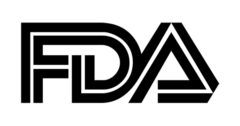
FDA recently published draft guidance on technical considerations for additive manufactured devices in response to the technology’s advancements and investments. Orthopaedic device companies and suppliers are among those in the medical device community leading the technology’s adoption, and in so doing, driving the conversation with FDA. Therefore, companies that have explored the use of additive manufacturing should not be surprised by the content in the draft guidance.
The guidance is organized into two areas: design and manufacturing considerations and device testing considerations. While industry often speaks of additive manufacturing as an emerging and innovative technology, FDA’s thoughts and recommendations on the use of additive are similar to other manufacturing processes. Post-processing, cleaning and sterilization, each of which are outlined in the draft guidance, are among FDA’s and industry’s top priorities in ensuring the safety and quality of additive manufactured devices. We present high points of the draft guidance based on conversations with orthopaedic device companies and FDA.
Design and Manufacturing Process Considerations
FDA points out that, like most medical devices, it expects additive manufactured devices to adhere to quality system and design control requirements. Due to the different combinations of processing steps involved in additive manufacturing, FDA asks that you clearly identify each step in the process from design to software workflow to build to post processing—all of the steps outlined in the design and manufacturing section of the guidance.
At RAPID, Matthew Di Prima, Ph.D., Materials Scientist at FDA and the draft’s lead author, highlighted the guidance’s subsections on software workflow, materials control and post-processing.
Additive manufacturing requires interaction between multiple software programs, often from different manufacturers, which necessitates files be compatible across the different applications used. An error in file conversion can negatively impact the finished device and component properties, such as dimensions and geometries. Therefore, the Agency recommends you test all file conversions with simulated worst-case scenarios to ensure expected performance.
Slicing and build paths are two points FDA calls out under software workflow. When it comes to slicing, chosen layer thickness should be documented and should reflect effects, accuracy, quality and printing speed of the technical characteristics of the machine and physical properties of the material. Similarly, build paths can affect the quality of the finished device. You must maintain consistency in your build paths between identical devices and components and provide proper documentation.
Regarding material controls, FDA’s concern is that the starting material may undergo significant physical and chemical change; therefore, the material can have a significant effect on the properties of the final finished device. FDA requests that the type of material, its supplier and specifications are documented. For example, if the material is a metal or ceramic, FDA seeks specifications on chemical composition and purity.
In listening to Di Prima and speaking with device manufacturers, post-processing remains a main concern with additive manufacturing due to the fact that device performance and material properties can be affected by these steps. Post-processing could include cleaning excess starting material from the device to annealing the device to relieve residual stress to final machining. The draft guidance recommends each of your post-processing steps be documented and discussion of the effects of post-processing on the material used and the final device is included in your submission.
Device Testing Considerations
The draft guidance states that in general if specific testing is needed for a device made using non-additive manufactured techniques, the information should also be provided for an additively manufactured device of the same type. FDA seeks clarification on mechanical testing, dimensional measurements, material characteristics and cleaning and sterilization.
In terms of testing, cleaning and sterilization is among the chief concerns of both FDA and industry. For instance, you need to establish how you are ensuring excess powder and manufacturing residue is removed from porous structures. The guidance doesn’t offer recommendations on how to validate cleaning and sterilization processes. It does state that manufacturers must establish and maintain procedures for the use and removal of manufacturing materials to ensure it is removed or limited to an amount that does affect device quality.
Conclusion
In total, the draft guidance is 28 pages. FDA notes many advantages of additive manufacturing, including creation of anatomically-matched devices, surgical instruments and easily engineered complex structures not possible using traditional manufacturing approaches.
FDA also notes that the technology presents challenges.
“The unique aspects of the AM process, such as the layer-wise fabrication process, and the relative lack of medical device history of devices manufactured using AM techniques, pose challenges in determining optimal characterization and assessment methods for the final finished device, as well as optimal process validation and acceptance methods for those devices,” FDA writes in the guidance.
FDA considers this “leap-frog” guidance, meaning it’s the Agency’s initial thoughts on the topic, and they will most likely change as additive manufacturing in medical devices advances. Comments on the guidance are being accepted until August 8.
CL
Carolyn LaWell is ORTHOWORLD's Chief Content Officer. She joined ORTHOWORLD in 2012 to oversee its editorial and industry education. She previously served in editor roles at B2B magazines and newspapers.




